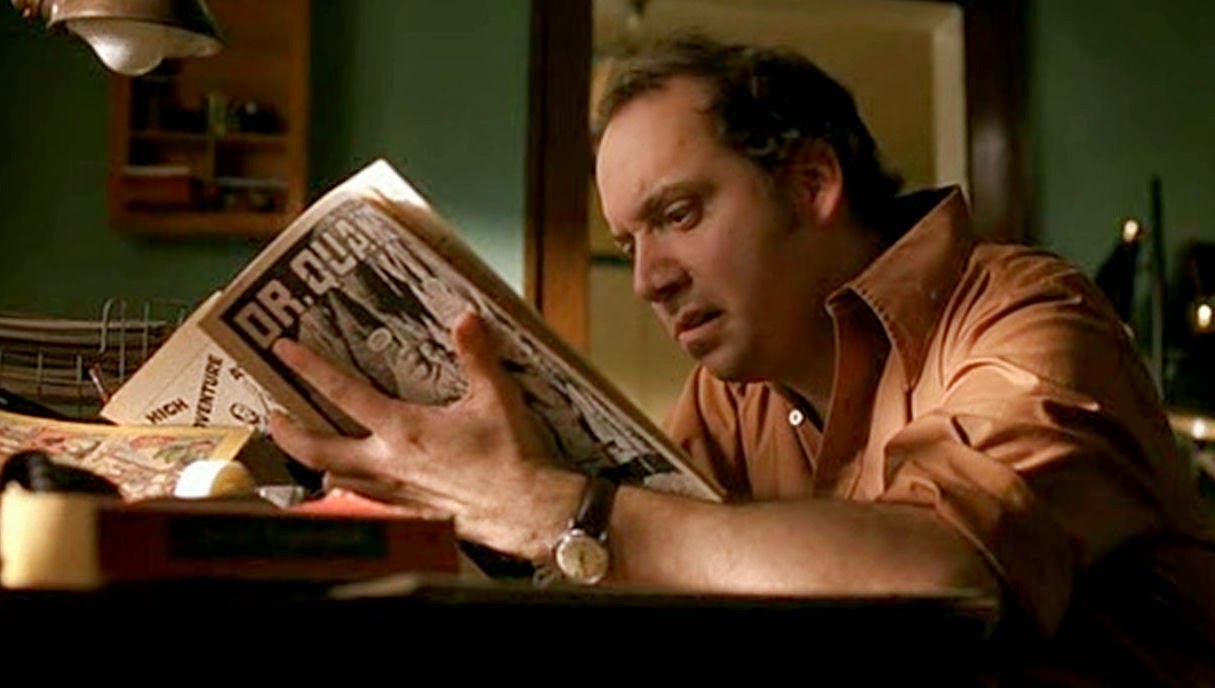
The ordinary life of ‘American Splendor’ 15 years later
Written by: Jessica Pena, CC2K Staff Writer
There’s something to be relished about ordinary life. Routine or not, we spend our days dealing with joys, pains, and variations of both. With our morning coffees, commutes to work, and the vigor of relationships, it’s difficult to consider our lives anything but complex, and so the tagline to 2003’s American Splendor goes, “Ordinary life is pretty complex stuff.” Harvey Pekar wasn’t kidding, and this goes well beyond being the comic poster man of mundanity.
Named after (and based on) his autobiographical series of comic books, the biopic explores Harvey Pekar in all his glory. American Splendor garnered Pekar a revival of sorts as folks rushed to purchase his comics and indulge in the mundane antics of an average Joe they related to. He works as a hospital file clerk. He isn’t a superhero; however, on his best days he feels like one.
Maybe you’ve never heard of Harvey Pekar, or even the existence of the American Splendor comic series. Perhaps your initial discovery came through the movie’s grocery store scene as discussed during your elective Intro to Film class in community college before going home to download and watch the entire thing—either way, no one would blame you. It’s been 15 years since the film premiered, and there’s always something to appreciate during rewatches, right?
As a comic book series, American Splendor enjoyed a good run, initially developing a fanbase in 1976 and holding traction until 2008. The stories follow Pekar’s existential struggles, his everyday boredom, and all things middle class. There’s a way the narrative so favorably mimics the comics, which still holds up all these years later. The manner in which it leaps from real-time Harvey to Giamatti, and back isn’t heavy-handed, but rather, endearing. Fifteen years later, it doesn’t feel all that dated.

There’s a substance of style and reality-bending in the way the film traverses between Pekar’s reality and the contrast to his illustrated self. Even in the grocery scene, Giamatti stands in line behind a couponing customer and all of a sudden, comic book Harvey and a thought bubble appear in order to settle the situation. The movie is an open book, fueling audience interaction. There will be random interview segments of Pekar talking to the film, meta narration, comic Harvey insertions, and Giamatti breaking the fourth wall in monologue.
One sequence follows Giamatti’s Harvey, as his cancer timeline begins. He examine’s his ideas of “what’s in a name.” The reality that even humans have an expiration date noticeably affects Harvey in the scene prior as he questions the longevity of his comic character’s life. He tells a story of seeing not one, but two other Harvey Pekar’s listed in the phone book. As he continues to ponder how that came to be, the scene fades into a road, then back into an illustrated room with a book lying open face on a chair. When we’re most vulnerable, we see the bigger picture of life, and Pekar feels that.
There’s a lot of media mixing, worked together like a jazz club in-sync with the script. As much as the expansion of storytelling amused him, music truly tickled Pekar’s fancy. American Splendor is set in the decades before actual production, getting another boost of personality in its use of the music Pekar loved so dearly. When Giamatti scavenges through yard sales early in the story, he finds jazz records. Proclaiming he’ll talk the seller down from the expensive 25 cent price, he coincidentally meets underground illustrator Robert Crumb. The rest is history. In a 1995 interview with David Garland in the book Harvey Pekar: Conversations, Pekar says, “As a matter of fact, it’s kind of funny that in a way writing about the mundane adds freshness to my work because it’s so seldom dealt with. Robert Crumb wrote that my work was so mundane that it was exotic.”
Before the film, others looked to adapt and make American Splendor about an everyday curmudgeon just getting by; however, they never could muster up the money or resources to fulfill the project. At one point, Rob Schneider top-lined discussions to play Pekar. It’s interesting to imagine what the role could’ve accomplished for him, or more importantly, what value Schneider would’ve added to the story. Ultimately, Paul Giamatti came to the role with co-directors Shari Springer Berman and Robert Pulcini. Hope Davis plays Pekar’s wife, Joyce Brabner. Giamatti’s portrayal of Pekar is virtually seamless, with an even more stunning performance from Davis as the caring, intelligent Brabner.

Critics took note of American Splendor. It won the Grand Jury Prize at Sundance and flew into awards season with an Academy Award nomination for Best Adapted Screenplay.
Berman and Pulcini directed the film, adapting the various sensibilities of Pekar’s life into the script. The collaboration between Harvey and Joyce, as well as adapting parts of their comic issue Our Cancer Year helps craft the story’s ending. We see that Harvey still has hope for this cruddy world.
Harvey Pekar died in 2010, but the comic book community and the rest of the world remember his distinct nature, demeanor, and all the sympathetic realisms his series explored.
American Splendor is still a treat to watch. It’s not a high-stakes narrative, rather it follows a comic book writer who hit it big telling the stories of his own life. That’s all it needed to be. Whether you get here for the oddball stories and stay for the Letterman stunts, American Splendor is a cultural mark of its own and it regrets nothing about ordinary life’s complexities.
